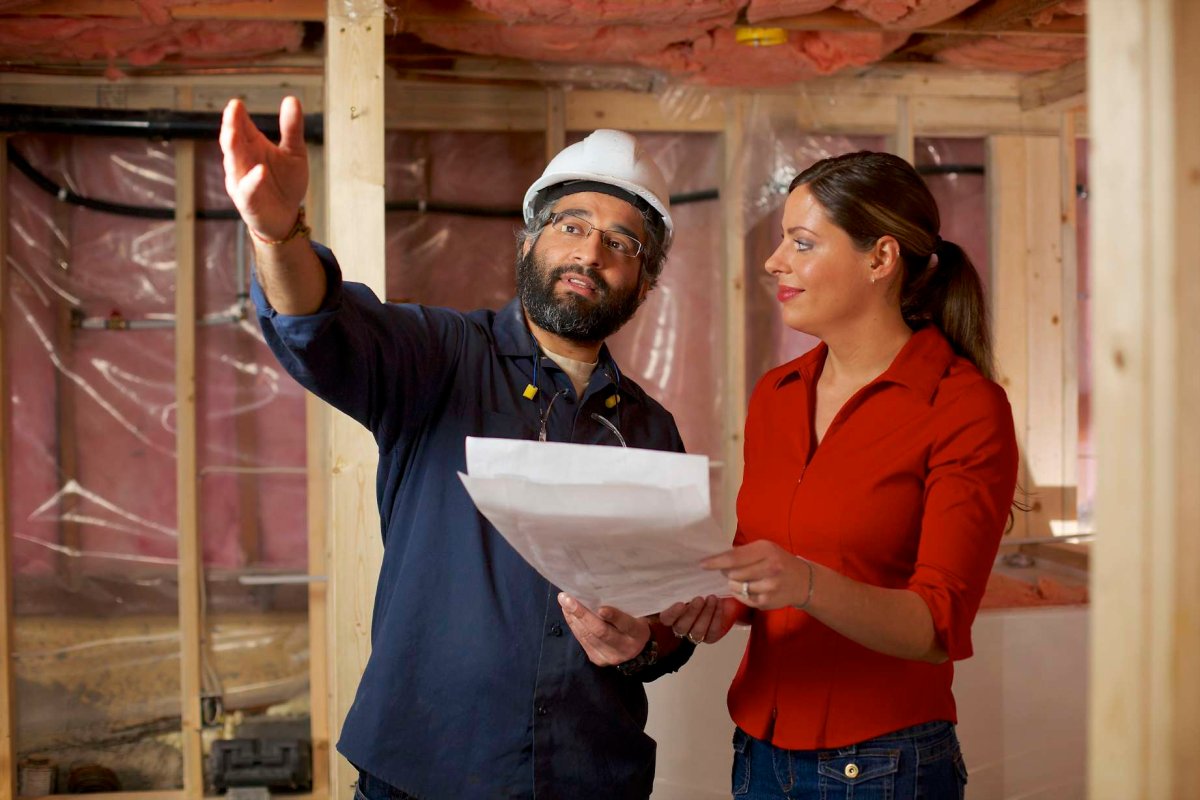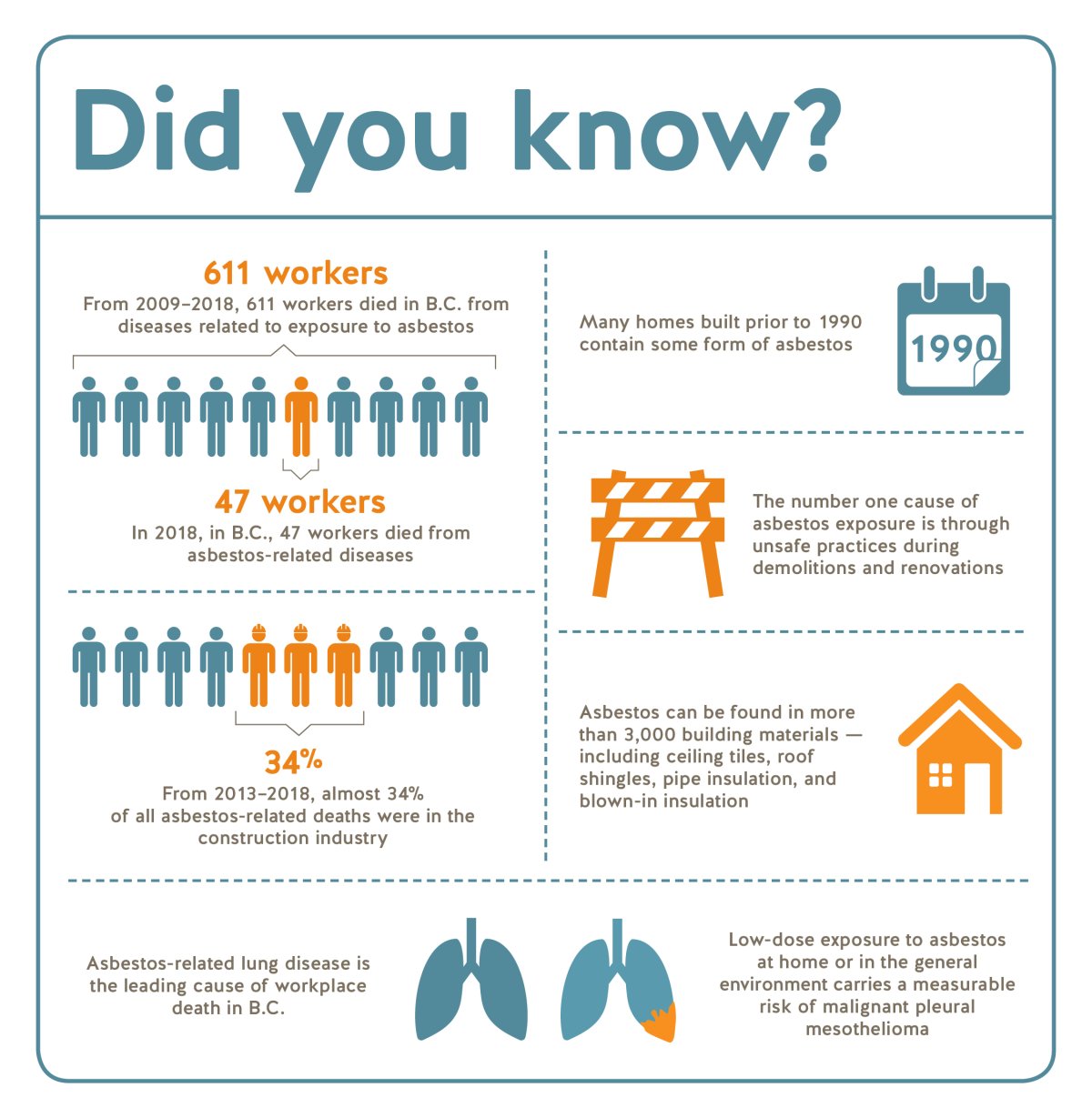Exposure to asbestos is the leading cause of work-related death in British Columbia and ordinary homeowners can do their part to reduce the risk to workers, by having their home tested before any renovation or demolition work is undertaken.

“The real issue is one of exposure caused by breathing in asbestos fibres,” says Al Johnson, VP of Prevention Services at WorkSafeBC, the agency responsible for regulating worker safety in the province. “These fibres are microscopic in size. You can’t see them. You can’t smell them, you can’t taste them. When asbestos is disturbed during renos or demos and you breathe in these fibres, they don’t make you cough or sputter like something like ammonia would. It doesn’t make you sneeze or make your eyes water. It doesn’t do any of that. You don’t even know you’re breathing in these fibres. That’s the scary part.”
Most houses built before 1990 contain products made with asbestos, notes Johnson adding that there are more than 3,000 different products in older homes that contain the substance and not always in obvious places. The natural mineral was valued for its strength, adhesion and fire-retardant properties and is perfectly safe if left in place, but when it is disturbed during construction, renovation or demolition, fibres are released and workers and people living in the home are at risk.
The harmful effects of asbestos are well-documented, explains Dr. Chris Carlsten, the head of respiratory medicine and Canadian research chair in occupational and environmental lung disease at the University of British Columbia.

Get daily National news
“Asbestos is most associated with adverse effects on the lungs, but it’s important to note it’s not exclusively a lung problem, there are effects in the gut that are also implicated with asbestos,” he says.
“The first thing you should do is not touch it and call a certified company that can test it,” says Gemmill.
Long-term exposure can lead to lung cancers like malignant pleural mesothelioma and other non-malignant lung diseases.
In the last decade, 611 B.C. workers died from diseases related to exposure to asbestos and the rate is rising, according to WorkSafeBC. Last year, the number that died was 47 and almost to half of those were among construction workers.
“We don’t actually have a confident lower limit of tolerable exposures to asbestos,” notes Dr. Carlsten. “That’s the technical way to put. In other words, there’s no absolutely defined safe level.”
Kenny Gemmill, a professional contractor and president of Kits Construction and Development who is also known for his work on the reality TV show Love it or List It Vancouver, urges homeowners to have their homes tested for asbestos before they do any renovation job, no matter how small.
“The first thing you should do is not touch it and call a certified company that can test it,” says Gemmill. “There are environmental companies out there that test the products that you want to remove for renovations. They will take samples of all the areas you want to remove and within a week they will let you know if there is asbestos.”
Once you know there is asbestos in your home, don’t try to remove it on your own in order to cut costs, says Gemmill, no matter how handy you are.
“If the tests come back positive that the materials you want to remove during renovation contain asbestos, a general contractor on site should not be the one removing it. You should hire a certified remediation company that comes in and they basically separate the area they are working on with tarps and create a hot zone so that when they disturb it, any particles that are freed are contained,” he notes.
“After that, the final step before any worker or homeowner can come back into that hot zone is an air quality test to make sure it’s safe to go back in.”
WorkSafeBC’s Johnson adds that they’re working with municipalities to make asbestos testing a mandatory requirement before issuing renovation and demolition permits. Because there is so much work going on in older homes in the province, the risk of asbestos exposure will continue to grow.
“Here in B.C., the Lower Mainland in particular, land and property is at a premium so we have a lot of older commercial buildings and homes being demolished and being replaced by larger multi-unit buildings. We’re finding that is where we’re seeing a lot of our asbestos exposures today.”
Gemmill says there is a temptation to save money by skipping testing and removal, but he notes the danger of exposure is real and the savings don’t outweigh the risks.
“It’s money well spent,” adds Johnson. “You then remove that material and you don’t have to deal with it again if you do further renovations. You’re protecting the health and well-being of your family and the workers doing the work.”
To learn more about the asbestos that might be lurking in your home, visit thinkasbestos.com.


